Description
The instruction for medical use
of ND Lorista® Lorista® medicine H
the Trade name
of Lorista® of N
of Lorista® of ND
the International unlicensed name
Is not present
the Dosage form
of the Tablet, film coated, 50 mg/12.5 mg and 100 mg / 25 mg
Structure
of Lorista® of N
One tablet contains
active agents – lozartan potassium of 50.00 mg
a hydrochlorothiazide of 12.50 mg,
excipients: prezhelatinizirovanny starch, cellulose microcrystalline, lactoses monohydrate, magnesium stearate,
plenonochny cover: gipromelloza, macrogoal 4000, quinolinic yellow (E104), titan dioxide (E171), talc.
Лориста® ND
One tablet contains
active agents – lozartan potassium of 100 mg
a hydrochlorothiazide of 25 mg,
excipients: prezhelatinizirovanny starch, cellulose microcrystalline, lactoses monohydrate, magnesium stearate,
structure of a cover: gipromelloza, macrogoal 4000, quinolinic yellow (E104), titan dioxide (E171), talc.
The description
of the Tablet of an oval form, with slightly biconvex surface, film coated yellow color and risky on one party (for a dosage of 50 mg / 12.5 mg).
Tablets of an oval form, with slightly biconvex surface, film coated yellow color (for a dosage of 100 mg / 25 mg).
Pharmacotherapeutic group
the Drugs influencing a system renin-angiotensin. Angiotensin II antagonists in a combination with other drugs. Angiotensin II antagonists in a combination with diuretics. Lozartan in a combination with diuretics.
ATX C09DA01 code
the Pharmacological
Pharmacokinetics Lozartan properties Absorption Later of intake lozartan is well soaked up from digestive tract, is exposed to considerable metabolism at the first passing through a liver, forming an active metabolite with carboxyl acid, other inactive metabolites. The system bioavailability of a lozartan in tablets is about 33%. Average peak concentration of a lozartan and its active metabolite are reached within 1 hour and 3-4 hours, respectively. There is no clinically significant impact of a lozartan on a profile of concentration of plasma at administration of drug with food.
Distribution
Lozartan and his active metabolite more than on ≥ 99% contact proteins of plasma, mainly, with albumine. The volume of distribution of a lozartan is equal to 34 liters. Lozartan very badly gets through a blood-brain barrier or does not get at all.
Metabolism
About 14% of the lozartan entered intravenously or orally is transformed to its active metabolite. Besides an active metabolite, inactive metabolites, including two main metabolites formed by hydroxylation of a butiolovy side chain and a non-core metabolite, N-2 tetrazole of a glyukorinid are formed.
Removal
Plasma clearance of a lozartan and its active metabolite makes about 600 ml/min. and 50 ml/min., respectively. The renal clearance of a lozartan and its active metabolite is about 74 ml/min. and 26 ml/min., respectively. At oral administration of a lozartan about 4% of a dose are removed in an invariable look, and about 6% – in the form of an active metabolite, with urine. The pharmacokinetics of a lozartan and its active metabolite is similar to dosages of a lozartan of potassium to 200 mg.
After intake of concentration of a lozartan and its active metabolite in blood plasma poliexpotsionalno decrease, final elimination half-life makes about 2 hours and 6-9 hours, respectively.
At reception once a day in a dose of 100 mg lozartan, its active metabolite do not accumulate in plasma in large numbers.
Lozartan and his metabolites are removed with bile and urine.
The hydrochlorothiazide
the Hydrochlorothiazide is allocated with kidneys almost completely (& gt, 95%) in not changed look. 50–70% of a single dose are removed during 24 h.
Elimination half-life makes 5–6 h.
The hydrochlorothiazide gets through a placenta, but does not get through a blood-brain barrier and is allocated with breast milk.
Special groups of patients
of Lozartan/hydrokhlorotiazidkoncentration of a lozartan and its active metabolite in plasma and absorption of a hydrochlorothiazide at elderly people with arterial hypertension do not differ in a considerable image from persons of young age with the same diagnosis.
LozartanPosle of oral administration at patients with slight and average alcoholic cirrhosis of a liver, concentration of a lozartan and its active metabolite in blood plasma was made in 5 and 1.7 times more, than at young volunteers is a male. lozartan its active metabolite are not removed by a hemodialysis.
Lozartan’s pharmacodynamics / a hydrochlorothiazide
Active agents of drug Lorista® H and Lorista® of ND make additive impact on a lowering of arterial pressure, reducing pressure is more effective, than each component separately. It is necessary that this effect is caused by favorable action of both components. Moreover, as a result of the diuretic effect, the hydrochlorothiazide enhances activity of renin of plasma, increases secretion of Aldosteronum, reduces potassium level in blood plasma and increases angiotensin II levels. Use of a lozartan blocks all physiologically significant influences of angiotensin II, and, by means of Aldosteronum inhibition, can reduce the potassium losses caused by diuretics.
Lozartan has easy and passing uricosuric effect. The hydrochlorothiazide causes moderate increase in uric acid, the combination of a lozartan and a hydrochlorothiazide tends mitigation of the hyperuricemia caused by diuretics.
The antihypertensive effect of a combination lozartan / a hydrochlorothiazide is maintained within 24 hours. At clinical trials lasting one year the minimum, antihypertensive effect was supported by means of long treatment. Despite a considerable lowering of arterial pressure, use of a combination lozartan / a hydrochlorothiazide did not show clinically significant impact on heart rate. In clinical trials after 12 weeks of treatment by a combination lozartan / a hydrochlorothiazide (50 mg / 12.5 mg), the minimal diastolic arterial blood pressure was reduced on average on level to 13.2 mm Hg. The combination lozartan / a hydrochlorothiazide is effective in a lowering of arterial pressure irrespective of a floor, racial origin and age (at young people (& lt, 65 years) and at elderly (≥65 years)) patients at all degrees of hypertensia.
Lozartan
Lozartan is a synthetic peroral antagonist of receptors of angiotensin II (AT1 type). Angiotensin II – strong vasoconstrictor – is the main active hormone renin-angiotenzinovoy of a system and an important determinant of a pathophysiology of hypertensia. Angiotensin II contacts AT1 receptors which are available in many fabrics (for example, in an unstriated muscle of vessels, adrenal gland, kidneys and heart) and causes several important biological actions, including narrowing of blood vessels and release of Aldosteronum. Angiotensin II also stimulates proliferation of smooth muscle cells.
Lozartan selectively blocks AT1 receptor. In the researches in vitro and in Vivo lozartan and it pharmacological the active karbonokislotny metabolite of E-3174 is blocked by all physiologically significant effects of angiotensin II, irrespective of a source or the direction of its synthesis.
Lozartan has no effect of agonist and does not block the receptors of other hormones or ion channels important for cardiovascular regulation. Moreover, lozartan does not inhibit angiotensin – the converting enzyme (kininaza of II), enzyme which destroys bradykinin. Therefore, there is no effect of increase in the adverse effects connected with bradykinin.
During use of a lozartan the elimination of negative effect of angiotensin II at secretion of rennin leads to strengthening of the activity of renin of plasma (ARP). Strengthening of ARP leads to increase in angiotensin II in plasma. Despite such increase, antihypertensive action and suppression of concentration of Aldosteronum of plasma are supported that demonstrates effective blockade of receptors of angiotensin II. After the termination of reception of a lozartan ARP and indicators of angiotensin II decrease within 3 days to usual indicators.
Lozartan and his main active metabolite have higher communication with AT1 receptor, than with AT2 receptor. The active metabolite is from 10 to 40 times more active, than lozartan, in terms of weight.
Assessment of frequency of developing of cough at the patients receiving treatment lozartany in comparison with the patients receiving treatment by APF inhibitors showed that the patients receiving lozartan/a hydrochlorothiazide had a similar frequency of developing of cough and considerably smaller, than at the patients receiving treatment by APF inhibitors.
At hypertensive patients (without diabetes) with a proteinuria the use of a lozartan of potassium considerably reduces a proteinuria, fractional excretion of albumine and IgG (class G immunoglobulin). Lozartan supports the level of glomerular filtration and reduces filtrational fraction. In general, lozartan causes decrease in uric acid in blood plasma (usually & lt, 0.4 mg/dl) that is steady in chronic therapy.
Lozartan does not influence autonomous reflexes and has no supporting effect of Norepinephrinum of plasma.
Patients with a left ventricular failure have doses of a lozartan of 25 mg and 50 mg give positive hemodynamic and neurohormonal effects that is characterized by increase in cardiac index and pressure decrease in trailer pulmonary capillaries, the system vascular resistance, average arterial system blood pressure and heart rate and also decrease in levels of circulation of Aldosteronum and Norepinephrinum, respectively.
At patients with heart failure the developing of hypotension depends on a dosage.
It is confirmed that single dose of a lozartan in day with easy and average degree of essential hypertensia causes considerable decrease in systolic and diastolic arterial blood pressure in patients. The termination of reception of a lozartan by patients with arterial hypertension did not lead to sharp increase in arterial blood pressure (back reaction). Despite noted lowering of arterial pressure lozartan has no clinically significant impact on heart rate.
Lozartan is equally effective for men and women, young (aged up to 65 years) and elderly patients with arterial hypertension.
The hydrochlorothiazide
the Hydrochlorothiazide is thiazide diuretic. The mechanism of antihypertensive effect of thiazide diuretics is up to the end not known. Tiazida influence pochechnokanaltsevy mechanisms of a reabsorption of electrolytes, directly increasing excretion of sodium and chlorine approximately in identical quantities. Diuretic action of a hydrochlorothiazide reduces plasma volume, increases activity of renin of plasma and increases secretion of Aldosteronum, with consecutive increase in uric potassium and losses of bicarbonates and also reduces potassium level in blood plasma. Renin-aldosteronovaya contact is kept by angiotensin II and therefore joint reception of the antagonist of receptors of angiotensin II interferes with the loss of potassium caused by thiazide diuretics.
After oral administration the diuretic effect begins within 2 hours, reaches peak in about 4 hours and about 6-12 hours proceed, the antihypertensive effect lasts till 24 o’clock.
Indications
– arterial hypertension in which monotherapy lozartany or a hydrochlorothiazide is inefficient
– reduction of risk of cardiovascular diseases and mortality at patients with arterial hypertension and a hypertrophy of a left ventricle
the Route of administration and doses
of Lorista® of H or Lorista® of ND can be accepted with other antihypertensive drugs and it is not dependent on meal. Tablets Lorista® H or Lorista® of ND should be swallowed entirely, washing down with a glass of water.
The combination lozartan / Hydrochlorthiazidum is shown for treatment of patients at whom arterial blood pressure is not controlled properly by monotherapy lozartany potassium or a hydrochlorothiazide separately. It is recommended to select a dose with individual components (lozartan and a hydrochlorothiazide).
At clinical need, at patients at whom arterial blood pressure is not controlled properly it is possible to consider direct change of monotherapy with the fixed combination.
The usual initial and maintenance dose of a combination lozartan/Hydrochlorthiazidum makes one tablet Lorista®H (lozartan 50 mg / Hydrochlorthiazidum of 12.5 mg) once a day. At the insufficient therapeutic answer the dose of Lorista®H can be increased to one tablet Lorista®HD (lozartan 100 mg / Hydrochlorthiazidum of 25 mg) accepted once a day. The maximum dose makes one tablet Lorista®HD (100 mg / 25 mg) once a day.
In general, the antihypertensive effect is reached within three-four weeks after the beginning of therapy.
Use for patients with a renal failure and
(with the clearance of creatinine (CC) of 30-50 ml/min.) is not required from the patients who are on a hemodialysis Correction of an initial dose at patients with a moderate renal failure. Tablets lozartan / a hydrochlorothiazide are not recommended for the patients who are on a hemodialysis. Tablets lozartan / a hydrochlorothiazide are contraindicated for use for patients with a heavy renal failure (KK & lt, 30 ml/min.).
Use for patients from the liver broken by function
the Combination lozartan / a hydrochlorothiazide is contraindicated for use for patients with a heavy liver failure.
Use for patients with a reduced intravascular volume
Before use of tablets lozartan / a hydrochlorothiazide it is necessary to correct previously the volume of liquid and/or level of sodium.
Elderly patients
For elderly patients the dose adjustment usually is not required.
Children and teenagers do18
there are no years of Experience of use for children and teenagers. Therefore the combination lozartan / a hydrochlorothiazide should not be applied at children and teenagers.
To do not miss administration of drug, a pill should be taken at the same time every day. If the patient forgot to take a pill, it is impossible to double the following dose. In the following reception the patient has to accept a usual dose of drug at the scheduled time.
Duration of treatment is established by the attending physician.
Side effects
Very often (& gt, 1/10)
– dizziness
Is rare (& gt, 1/10.000 to & lt, 1/1.000)
– hepatitis
– a hyperpotassemia
– increase
in ALT Lozartan Chasto (& gt, 1/100 to & lt, 1/10)
– pain in a stomach, nausea, diarrhea, dyspepsia
– an asthenia, fatigue, pain in a thorax
– muscular spasms, a dorsodynia, an onychalgia, myalgia
– a headache, dizzinesses, insomnia
– renal failures, a renal failure
– cough, an upper respiratory tract infection, congestion of a nose, sinusitis,
– diseases of bosoms
– a hyperpotassemia, moderate decrease in a hematocrit and hemoglobin, a hypoglycemia
not often (& gt, 1/1.000 to & lt, 1/100)
– anemia, Shenleyn-Genokh’s disease, an ecchymoma, hemolysis
– hypotension, orthostatic hypotension, a sternalgiya, stenocardia, AV-blockade of the II degree, cerebrovascular disturbances, a myocardial infarction, the strengthened heartbeat, arrhythmias (fibrillation of auricles, sinus bradycardia, tachycardia, ventricular tachycardia, fibrillation of ventricles)
– the dizziness and sonitus connected by disorder of function of labyrinths
– the obscured sight, sensation of burning or an acute pain in eyes, conjunctivitis, decrease in visual acuity
– dryness and an oral cavity pains, a constipation, a meteorism, gastritis, vomiting
– swell, puffiness of the person, fever
– anorexia, gout
– swelled joints, an arthralgia, arthritis, rigidity of joints, skeletal and muscular pains, muscle weakness, fibromyalgia, a coxalgia
– nervousness, paresthesias, a peripheral neuropathy, a tremor, migraine,
– faints
– concern, an alarm syndrome, panic disorder, confusion
of consciousness, a depression, pathological dreams, sleep disorders,
drowsiness, a memory impairment
– a nocturia, frequent urinations, infections of urinary tract
– decrease a libido, erectile dysfunction / impotence
– discomfort in nasopharyngeal area, congestion of a nose, rhinitis, breath difficulty, pharyngitis, laryngitis, bronchitis, nasal bleeding
– an alopecia, dermatitis, xeroderma, an erythema, photosensitivity, hyperaemia, an itching, rash, a small tortoiseshell, perspiration
– a vasculitis
– moderate increase in level of urea and creatinine in blood plasma
is rare (& gt, 1/10.000 to & lt, 1/1.000)
– hypersensitivity: anaphylactic reactions, a Quincke’s disease, including edema of laryngeal and glottis that leads to obstruction of airways, and/or edemas of face, lips, drinks and/or language, some patients in the anamnesis had a Quincke’s disease connected with use of other drugs, including AKF inhibitors
Very seldom (& lt, 1/10.000)
–
does not know increase in activity of liver enzymes and bilirubin
– a hyponatremia
– thrombocytopenia
– pancreatitis
– a grippopodobny symptom
– feeling of alarm
– an abnormal liver function
– a syndrome of long compression
the Chasto’s Hydrochlorthiazidum (& gt, 1/100 to & lt, 1/10)
– a headache
not often (& gt, 1/1.000 to & lt, 1/100)
– an agranulocytosis, aplastic anemia, hemolytic anemia, a leukopenia, thrombocytopenia, capillary hemorrhages
– anorexia, a hyperglycemia, a hyperuricemia, a hypopotassemia, a hyponatremia
– insomnia
– the passing obscured sight, a xanthopsia
– a necrotic vasculitis (a vasculitis, a skin vasculitis)
– respiratory diseases, including pneumonia and a fluid lungs
– inflammation of a sialaden, spasms, irritation of a stomach, nausea, vomiting, diarrhea, a constipation
– jaundice (intra hepatic cholestasia), pancreatitis
– photosensitivity, a small tortoiseshell, a toxic epidermal necrolysis
– muscular spasms
– a glycosuria, interstitial nephrite, a renal failure, a renal failure
– fever
– dizziness
Is rare (& gt, 1/10.000 to & lt, 1/1.000)
– anaphylactic reaction
of the Contraindication
– hypersensitivity to any component of drug
– a hypopotassemia, resistant to therapy, or a hypercalcemia
– a heavy liver failure, a cholestasia and obstruction of bilious ways
– a refractory hyponatremia
– a symptomatic hyperuricemia / gout
– pregnancy and the period of a lactation
– a heavy renal failure (KK & lt, 30 ml/min.)
– an anury
– children’s and teenage inzrast up to 18 years
the Medicinal interactions
Lozartan
Rifampitsin and flukonazol reduce levels of active metabolites. The clinical consequences of these interactions were not assessed.
As well as at use of other medicines blocking angiotensin II or its effect, simultaneous use of kaliysberegayushchy diuretics (for example, Spironolactonum, Triamterenum, amiloride), the potassium additives or substitutes of salt containing potassium can lead to increase in level of potassium in blood plasma. Combined use is not desirable.
As well as at use of other medicines influencing sodium removal, removal of lithium can be reduced. Therefore lithium levels in blood plasma should be controlled carefully if salts of lithium are applied in parallel with antagonists of receptors of angiotensin II.
At simultaneous use of antagonists of angiotensin II with non-steroidal anti-inflammatory drugs (i.e.
reduction of antihypertensive effect can arise selection TsOG-2 inhibitors) and non-selective non-steroidal anti-inflammatory drugs. Combined use of antagonists of angiotensin II or diuretics and non-steroidal anti-inflammatory drugs can result in the increased risk of a renal failure, including a possible acute renal failure and also to increase in level of potassium in blood plasma, especially at patients with weak function of kidneys. The combination has to be applied with care, especially at elderly patients. Patients have to accept enough liquid, and it is necessary to control carefully function of kidneys after the beginning of joint therapy and also periodically subsequently. At some patients with impaired renal function receiving treatment by non-steroidal anti-inflammatory drugs, including selection inhibitors of cyclooxygenase-2, combined use of antagonists of receptors of angiotensin II can lead to further deterioration in function of kidneys. Such effect is usually reversible. Double blockade (for example, prescribing of AKF inhibitor with the antagonist of receptors of angiotensin II) is not recommended at patients with the diagnosed atherosclerotic disease, heart failure or diabetes with damage of target organs as is associated with the increased frequency of developing of arterial hypotension, faint, a hyperpotassemia and renal failure (including an acute renal failure), when comparing with use of one drug influencing renin-angiotensin-aldosteronovuyu a system.
Other substances causing hypotension, such as tricyclic antidepressants, antipsychotic means, Baclofenum, amifostin: combined use of these drugs which reduce arterial blood pressure as the main or side effect can increase risk of developing hypotension.
A hydrochlorothiazide
At simultaneous use with thiazide diuretics the following drugs can enter interaction:
Alcohol, barbiturates, drugs or antidepressants: there can be strengthening of orthostatic hypotension.
Protivodiabeticheky medicines (oral drugs and insulin): treatment tiazidy can affect tolerance to glucose. There can be a need for dose adjustment of antidiabetic means. It is necessary to appoint metformin with care in connection with the existing risk of developing the lactat acidosis caused by the possible functional disturbance of kidneys connected with a hydrochlorothiazide.
Other antihypertensive medicines: the additive effect is observed.
Holestiraminovy and kolestipolovy pitches: in the presence of pitches of anion exchange the absorption of a hydrochlorothiazide worsens. The single dose of holestiraminovy or kolestipolovy pitches connects a hydrochlorothiazide and reduces its absorption from digestive tract up to 85 and 43 percent, respectively.
Corticosteroids, adrenal hormones: the strengthened decrease in electrolytes, in particular a hypopotassemia.
Pressor amines (for example, adrenaline): decrease in effect of pressor amines is possible, but not it is enough to exclude their use.
Not depolarizing relaxants of skeletal muscles (for example, tubocurarine): the possible increased response to muscular relaxants.
Lithium: diuretics reduce renal clearance of lithium and increase risk of lithium toxicity, combined use is not recommended.
The medicines used for treatment of gout (probenetsid, Sulfinpyrazonum and Allopyrinolum): there can be a need for dose adjustment of the medicines promoting removal of uric acid as the hydrochlorothiazide can increase the level of uric acid in blood plasma. There can be a need for increase in a dosage of a probenetsid or Sulfinpyrazonum. Combined use of a tiazid can increase the frequency of emergence of hypersensitivity reactions to Allopyrinolum.
Anticholinergics (for example, atropine, Biperidinum): increase in biological availability of thiazide diuretics by decrease in mobility of digestive tract and speed of gastric emptying.
Cytotoxic means (for example, cyclophosphamide, methotrexate): tiazida can reduce renal excretion of cytotoxic medicines and strengthen their myelosuppressive action.
Salicylates: at high doses of salicylates the hydrochlorothiazide can strengthen toxic effect of salicylates on the central nervous system.
Methyldopum: there are some data on the hemolytic anemia arising at combined use of a hydrochlorothiazide and Methyldopums.
Cyclosporine: joint treatment with cyclosporine can increase risk of a hyperuricemia and complications of type of gout.
Foxglove glycoside: the hypopotassemia or a hypomagnesiemia caused by a hydrochlorothiazide can promote developing of the cardiac arrhythmias connected with a digitalis.
Medicines which influences disturbance of potassium in blood plasma: during use lozartana / a hydrochlorothiazide with medicines which disturbances of serumal potassium influence (for example, a glycoside of a foxglove and antiarrhytmic drugs) it is recommended to carry out periodic monitoring of levels of potassium in blood plasma and the electrocardiogram and also at use of the following drugs causing torsades de pointes (ventricular tachycardia) (including some antiarrhytmic drugs), the hypopotassemia is the contributing factor to torsades de pointes (ventricular tachycardia):
– antiarrhytmic drugs of the class Ia (for example, quinidine, hydroquinidine,
Disopyramidum)
– antiarrhytmic drugs of class III (for example, Amiodaronum, sotalol, dofetilid, ibutilid)
– some antipsychotic means (for example, thioridazine, Chlorpromazinum, levomepromazinum, trifluoperazin, tsiamemazin, Sulpiridum, sultoprid, amisulprid, tiaprid, Pimozidum, a haloperidol, Droperidolum)
– others (for example, bepridit, tsizaprid, difemanit, erythromycin IV, galofantrin, mizolastin, pentamidine, terfenadin, Vincaminum IV)
calcium Salts: as a result of decrease in excretion, thiazide diuretics can increase calcium levels in blood plasma. In need of prescribing of calcic additives it is necessary to control calcium levels in blood plasma, and as appropriate to adjust a calcium dosage.
Laboratory researches: owing to impact on calcic exchange of a tiazida can interfere with carrying out tests of function of an epithelial body.
Carbamazepine: risk of a symptomatic hyponatremia. Clinical and biological monitoring is necessary.
Iodinated contrast agent: in case of the hydropenia caused by diuretics there is an increased risk of an acute renal failure, especially at high doses of iodinated drug. Before use for patients it is necessary to restore water balance.
Amphotericinum B (parenterally), corticosteroids, adrenal hormones or the stimulating depletive or glycyrrhizin (contains in a liquorice): the hydrochlorothiazide can strengthen an electrolytic imbalance, in particular, a hypopotassemia.
Special instructions
Lozartan
the Quincke’s disease
Patients with angioedemy (edema of face, lips, throats and/or language) should be in the anamnesis under careful observation of the doctor.
Hypotension and decrease in intravascular volume
Symptomatic hypotension, especially after the first dose, can arise at patients with the reduced volume of liquid and/or deficiency of sodium caused by use of strong diuretics, dietary restriction of consumption of salt, diarrhea or vomiting. Such states demand correction before an initiation of treatment lozartanom / a hydrochlorothiazide.
The electrolytic imbalance is often observed at patients with a renal failure (with diabetes or without it) that it is necessary to take into account. Therefore it is regularly necessary to control potassium concentration in blood plasma and KK indicators, especially at patients with heart failure and KK of 30-50 ml/min.
Simultaneous use of the kaliysberegayushchy diuretics, potassium additives and substitutes of salt containing potassium with lozartanom / a hydrochlorothiazide is not recommended.
The abnormal liver function
based on the pharmacokinetic data indicating significant increase in concentration of a lozartan in blood plasma at patients with cirrhosis lozartan / a hydrochlorothiazide should be applied with care at patients with easy and average degree of a liver failure. Experience of therapeutic use of a lozartan for patients with a heavy liver failure is absent. Thereof the combination lozartan / a hydrochlorothiazide is contraindicated to patients with a heavy liver failure.
A renal failure
as a result of inhibition renin-angiotensin-aldosteronovoy of a system changes of function of kidneys were observed, including a renal failure (especially, patients with dependence have functions of kidneys from system renin-angiotensin-aldosteronovoy, with heavy heart failure or with already existing renal failures). As well as at use of other medicines influencing renin-angiotensin-aldosteronovuyu a system, increases in level of urea in blood and creatinine in blood plasma at patients with a bilateral stenosis of renal arteries or a stenosis of an artery of the only kidney were observed, these changes in function of kidneys can be reversible after the therapy termination. Lozartan it is necessary to apply with care at patients with a bilateral stenosis of renal arteries or a stenosis of an artery of the only kidney.
Transplantation of a kidney
Is not present experience concerning safety of use of drug to the patients who transferred transplantation of a kidney.
Primary hyper aldosteronism
At patients with primary hyper aldosteronism, as a rule, is not observed effect at use of the antihypertensive drugs operating by oppression system renin-angiotenzinovoy. Therefore use of a combination lozartan / a hydrochlorothiazide is not recommended for this group of patients.
Coronary heart disease and cerebrovascular diseases:
As well as at use of other antihypertensive drugs, the excessive lowering of arterial pressure at patients with coronary heart disease and a cerebrovascular disease, can lead to development of a myocardial infarction or stroke.
Heart failure
As well as at use of other drugs influencing renin-angiotensin-aldosteronovuyu a system for patients with heart failure with a renal failure or without it exists risk of developing heavy arterial hypotension and (often acute) renal failure.
The stenosis of aortal and mitral valves, a subaortic hypertrophic stenosis
As well as at use of other vazodilatator, with extra care appoint to patients with a stenosis of the aortal or mitral valve or a subaortic hypertrophic stenosis.
Ethnic features
Lozartan and other antagonists of angiotensin are less effective in a lowering of arterial pressure at patients of negroid race, than at other patients, perhaps, because of low activity of renin in group of negroid patients with arterial hypertension.
Pregnancy
the Combination lozartan / a hydrochlorothiazide cannot be applied during pregnancy. Until treatment by a combination lozartan / a hydrochlorothiazide is considered necessary, the patients planning pregnancy should be transferred to alternative antihypertensive treatment which has to have the approved profile safely
to Develop





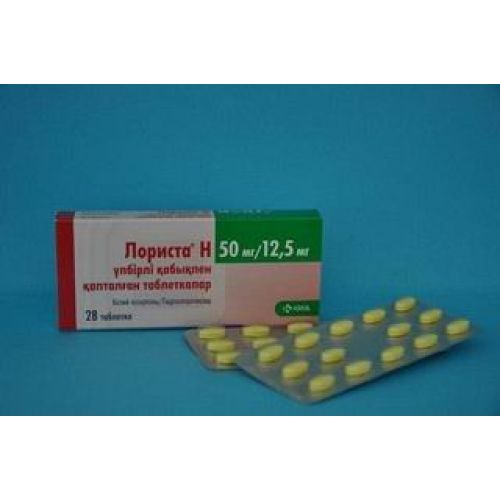
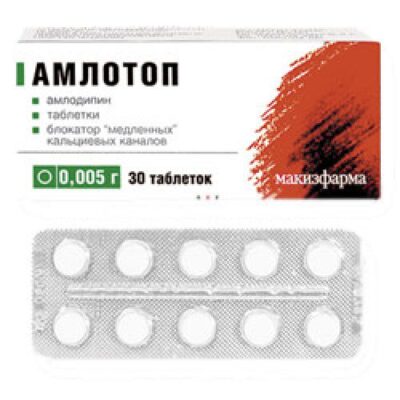

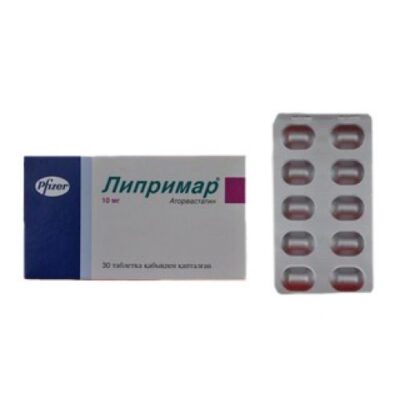
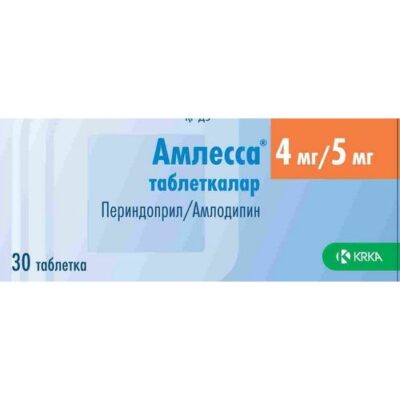
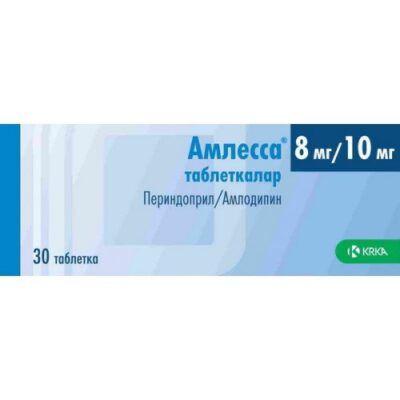
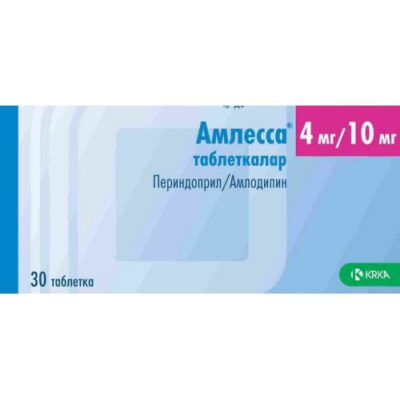
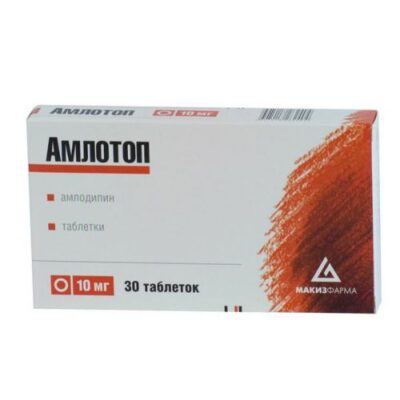
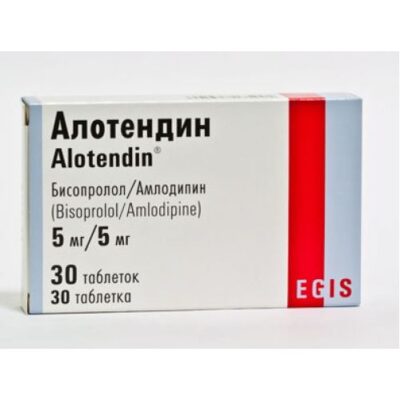
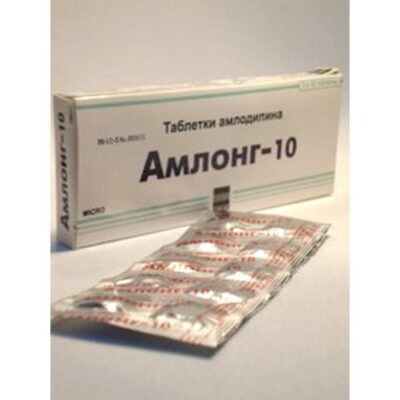
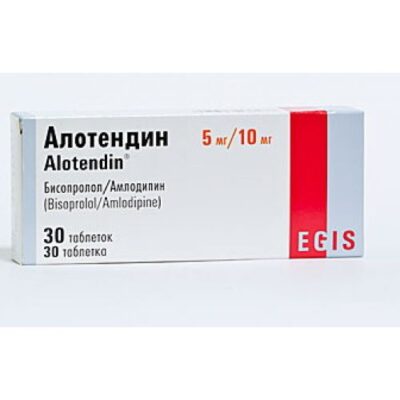






Reviews
There are no reviews yet.